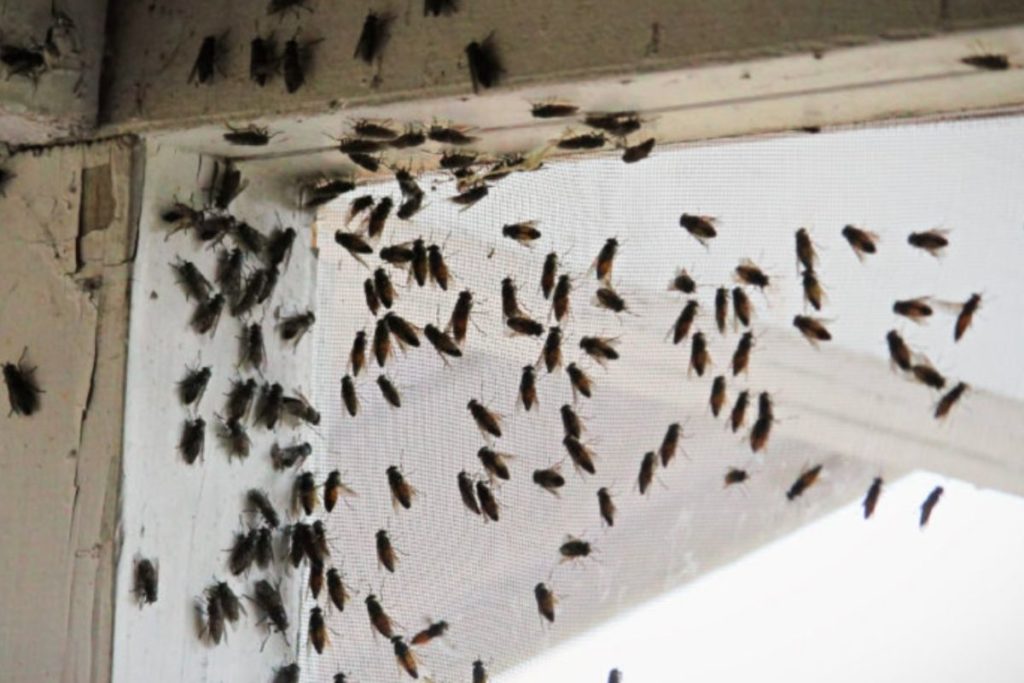How to Get Rid of Cluster Flies
When windows and doors are propped open during the summer months, it’s common for insects to take refuge inside our homes. However, infestations can also occur during the winter. Once the temperature drops, cluster flies are attracted to warm, safe environments such as basements and attics; if left untreated, heavily infested buildings can contain several thousand cluster flies. To help keep your home free of unwanted guests, we have detailed how to prevent cluster flies from entering a property and how to get rid of cluster flies should an infestation occur.

What Are Cluster Flies?
As the name suggests, cluster flies cluster in suitable overwintering spots to escape the cooler temperatures during autumn and winter.
Prior to their hibernation, cluster flies’ abdomens are full of fat from eating earthworms or sipping plant nectar, therefore they can remain inactive for long periods of time. In spring, they come out of hibernation to lay eggs in damp soil or rotting vegetation.
Compared to other larger flies like house flies and blue bottles, cluster flies are not filth flies and do not pose the same health risks. With this said, cluster flies are still a nuisance, particularly if they gather in large numbers.
How to Prevent Cluster Fly Infestations
Cluster flies are one of the most challenging pests to prevent. Their small and agile bodies allow them to access properties through the smallest of cracks. However, there are a few methods to help prevent a cluster fly infestation from getting out of control.
Seal Interior Cracks
To prevent cluster fly infestations, fill in any small openings around windows and door frames. Attempting to caulk your property will never be 100% effective, but it will help reduce the risk of cluster flies taking refuge in your home.
Flypaper and Traps
To prevent cluster fly infestations, use flypaper or sticky traps to capture the flies before they are able to cluster in your home. To attract cluster flies to your traps, fill a jar with a sweet water solution and seal it with a lid, leaving a small opening approximately 6-8mm wide. Be sure to empty the jar and replenish the water solution regularly for best results.
How to Get Rid of Cluster Flies
If cluster flies have already entered your property, the methods below detail how to get rid of cluster flies using both physical and chemical techniques.
Remove Visible Flies
When cluster flies are hibernating, their movement is minimal and slow. Therefore, they can be swatted or vacuumed with ease. Keep in mind that if you notice a few cluster flies, there is likely a large cluster hidden away. To remove the infestation entirely, you will need to swat and vacuum regularly.
Approved Indoor Pesticide
Indoor sprays containing pyrethrins can kill cluster flies quickly. Simply spray a light coating of the product onto the cluster flies for best results. It should be noted that although commercial products containing pyrethrins are low in toxicity to humans and other mammals, they can be toxic to fish, so avoid contaminating water supplies.
Pesticides are an effective method if sprayed areas are cleaned thoroughly. If large quantities of dead cluster flies remain in your property, they can attract other pests such as beetles and rodents, leading to more complex issues in the future.
How to Remove Cluster Flies Safely
Although cluster flies don’t pose any serious health risks, they are still unwanted and irritating pests.
To successfully remove cluster fly infestations, we recommend contacting an expert in cluster fly control. Here at Confirm A Kill, we have two decades of experience in keeping homes across Nottingham pest free. If you are concerned about a potential infestation, please get in touch with one of our pest control professionals. We can advise on how to get rid of cluster flies quickly and effectively.
